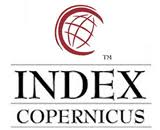Extraction And Study Of Foam Glass From Volcanic Rock - Obsidian
Abstract
Foam Glass was obtained artificially almost a century ago and is still a widely used and it is a universal, environmentally and hygienically safe, lightweight thermal insulation material. Foam Glass, in addition to low thermal conductivity and moisture absorption, is non-flammable, resistant to water and chemical reagents, etc. This allows it to be widely used in construction, energy, chemical industry and other areas. Foam Glass is used to produce many types and areas of products - tiles and blocks, shaped thermal insulation, individual materials (grit, granules) and much more.
The technology of manufacturing Foam Glass and Foam glass products is complex, as it requires a specific raw material base, as well as careful adherence to technological processes for the manufacture of porous glass and products from it.
The economics of Foam glass making is largely determined by the availability and cost of raw materials, as well as costs incurred in obtaining charge. It becomes important to take into account issues such as the stability of the composition of raw materials and the minimization of the number and types of technological processes required for its preparation. In this regard, modern approaches to Foam Glass production are irrational.
As an alternative raw material base for Foam Glass, we have chosen glass-obsidian of volcanic origin, mined in Georgia (Samtskhe-Javakheti region). Its deposit is a volcanic, entirely obsidian (glass) mountain, and its deposits were formed as a result of erosional processes, which are represented by a large number of detrital products.
The results of the conducted research show that obsidian mono charge from the selected deposit can be used as a suitable raw material for Foam Glass production. Foam Glass is obtained by heat treatment of obsidian at a temperature of 1200± 20°C for 20-25 minutes, which ensures the production of a material with a bulk density of 180-200 kg/m3. Water absorption, sorption capacity, compressive strength and other properties of the resulting Foam glass fully comply with the requirements of the current glass standard.
Keywords
Full Text:
PDFReferences
. Foam Glass – an overview.https: www. sciencedirect. com /topics/enering/foam-glass
. Foam Glass.Wikipedia.en.wikipedia.org/wiki/Foam_glass
. Preparation and characteristics of glass foam. Aalborg Universitets forskningsportal
. (2019). https:/vbn.aan.dk>fiees>PHD_Martin_Bonderu.
. R.Aaboe. Foam glass –an alternative lightweight and insulating. Statens vegveson.
. https://www.vegvesen no >an>foku somrader
. Glass Handbook. https://professional.gjames.com/__data/assets/pdf_file/
. R. Melkonyan, O. Suvorova, D.Makarov, N. Manakova. Vitreous Foamed Materials:Challenges of Production and Solutions. DOI:10.25702/KSC.2307-5228-2018-10-1-133-156. C:/Users/ps/Dowland S/ proizvodstvo stekloobranyh-penomaterialov-problemi –i-reshenia/pdf (in Russian);
. GOST33949-2016(EN13167-2012, NEQ). Cellular glass thermal insulating product for buildings and counstractions. https//files.stroyif.ru>index 2( in Russian).
DOI: http://dx.doi.org/10.52155/ijpsat.v50.2.7233
Refbacks
- There are currently no refbacks.
Copyright (c) 2025 Ana Guraspashvili, Maia Mshvildadze, Teimuraz Cheishvili

This work is licensed under a Creative Commons Attribution 4.0 International License.



















